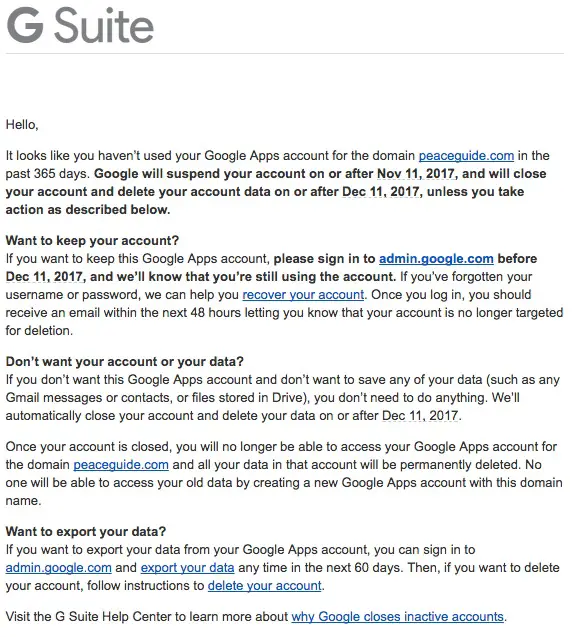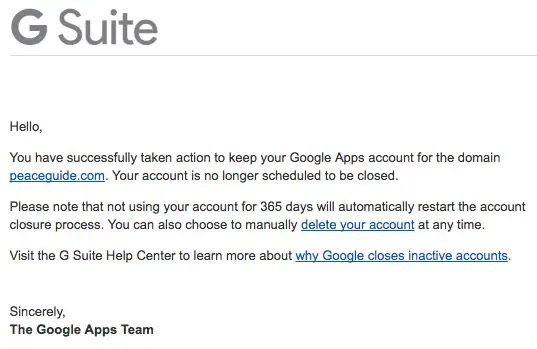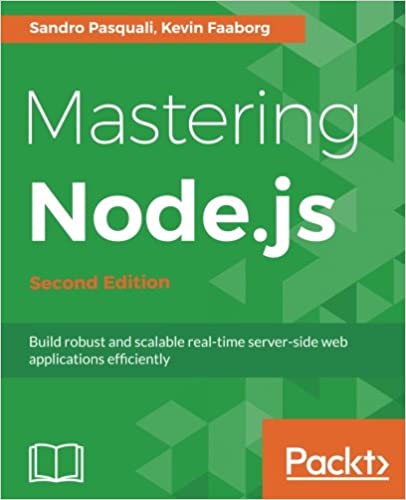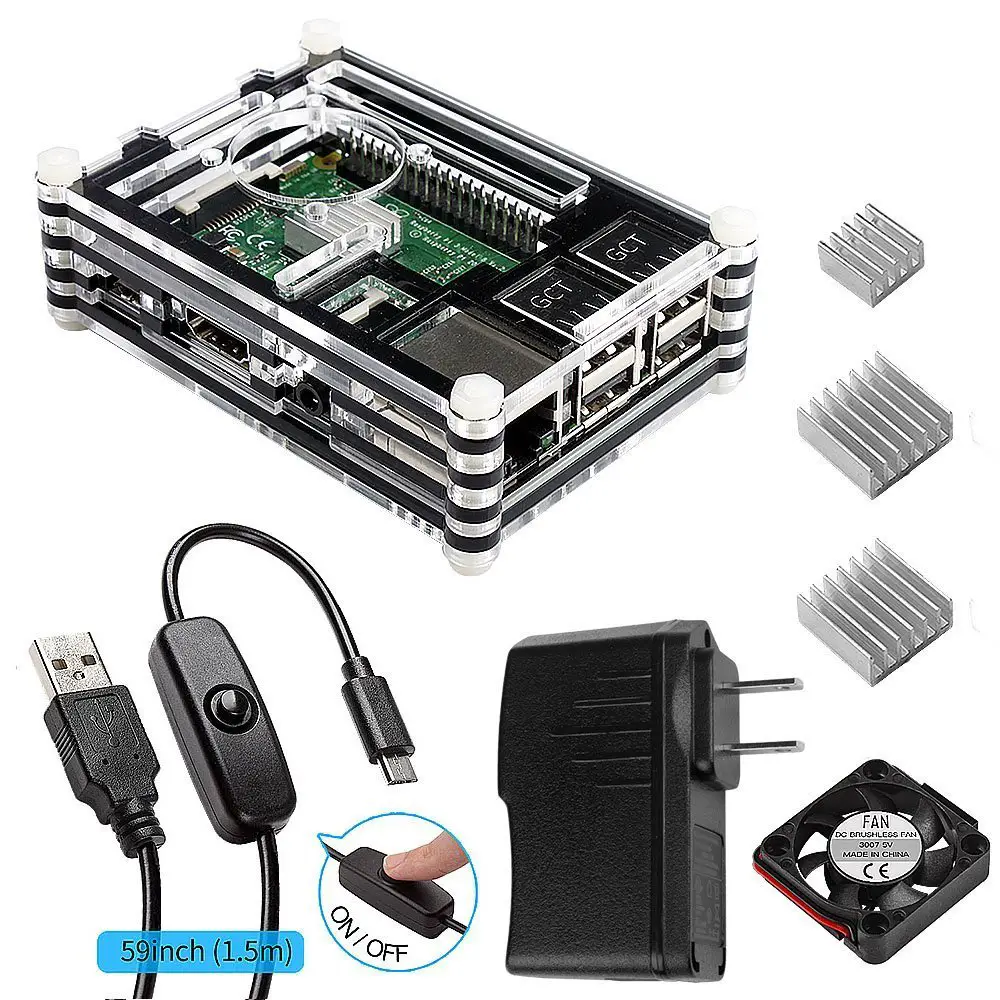; Date: Fri Oct 13 2017
Tags: Google »»»»
Back in the day, Google offered an amazingly free service called "Google Apps for your Domain". The service bundled together GMAIL, Google Drive/Docs/etc, and many other Google services, into an account branded with the domain name of your choice. If that sounds familiar, Google calls the service "G Suite" today, and it is currently offered only at a fee. For a fee you can attach a long list of Google services to your own domain, and have Google-managed email and document storage/editing, and more. Before this was called G Suite, it was called Google Apps, and there was a free tier of service. Anyone with a domain could hook it up to this service and get the same long list of Google services attached to the domain. I did this with all the domains I owned at the time, and therefore have maybe a dozen of these Google Apps for a Domain accounts. Despite transitioning it to a payola service, Google has promised all along the free accounts would remain free. But that doesn't mean Google isn't trying to sneak around the edges to close those free accounts.

I received the above notice from Google the other day. Being a wise person I did not click on the links in the email (what if this was a Phishing attempt?), but went to my Chromebook and logged into the named domain,
admin.google.com. After logging in I determined that, indeed, this Google Apps for Domain account was due to be canceled for disuse.
History
What's now called "G Suite" (and was formerly called Google Apps for Domain) is a bundling of several Google Services. Instead of getting an account name ending in @gmail.com the account name ends in your domain name. The end user of a G Suite account has what appears to be a normal Google Account, but the domain name is different. See
https://gsuite.google.com/features/ for a features list.
Google launched this service sometime back in the mid-2000's. One attractor was the "Google Apps" service which offered a hosted/managed container for hosting Java server applications, hence the original name "Google Apps for Domain".
Perhaps Google did this in a ploy to get users, but for the first several years the service was free. The only limit was the number of accounts you could have per domain. In some corners this is the Freemium model, where you offer a free service, and then demand a fee to access more services.
What it meant for me was a cheap (free) way to have a Gmail account for my own domain names such as davidherron.com, peaceguide.com, 7gen.com and so on. Another advantage is that a Google Drive account comes along with each account, meaning I can store documents related to specific topic areas with accounts associated with each domain.
Freemium model ends
A few years ago Google did away with the free service - no new signups were allowed on the free tier. Google promised that the free accounts would always remain free. It seems, though, that "always" doesn't mean "always" in Google's mind.
The email I received is obviously a ploy to cancel the account. If I weren't responsively taking care of my email every day I might have ignored this, and then lost the account, and possibly lost documents or email content.
Heading over to the G Suite product forum (
https://productforums.google.com/forum/#!forum/apps) and I see several people complaining about disabled G Suite accounts.
Weeding out dormant accounts
For Google's part their help document (
https://support.google.com/a/answer/3424304) says that Some customers can’t sign up for G Suite accounts because the domain they own is already associated with an existing free edition G Suite account that is inactive. Eh? Say what?
It's not clearly spelled out but the only scenario which makes sense is this series of steps:
- Back in the day someone registered a "free edition" Google Apps for Domain account for a given domain, let's call it
xyzzy.com - Sometime later the
xyzzy.comexpires because nobody is using it, perhaps Xyzzy, Inc went out of business - Sometime after that someone else registers
xyzzy.comand goes to set up a G Suite account - They cannot do so because of the pre-existing G Suite account
This is sensible. A G Suite account that hasn't been accessed in ages and is attached to an expired domain is probably not being used and probably nobody cares if it gets deleted. Since Google promised those accounts would remain forever, Google needs a process to follow to ensure nobody wants the dormant G Suite account.
It's a little different when Google tries to expire an account attached to a non-expired domain. That's the case with my domains. The domains aren't expired, and in most cases I want to hang onto the free Google Apps for Domain account. I haven't been using the accounts, but want to keep them just in case. Meaning I should review all my domains and access these accounts and make sure I have control over them all.

Your homework
If the above applies to you, and if you want to keep your Google Apps for Domain account, here's what you do.
- Head to
admin.google.comand log in using the administrator account for the domain. - If you've forgotten the username or password, there is a recovery procedure. You did set up a recovery account didn't you?
- That's you must do to keep Google from deleting the account.
- Once logged in it's a good idea to browse the administrator area and reaquaint yourself with the facilities.
- Think about "do I really need this service"?
- If not, it seems Google would really like you to delete the account anyway.
- If you have multiple of these accounts, make a list of them, with account names and passwords
- Set up a schedule of using these accounts at least once a year











